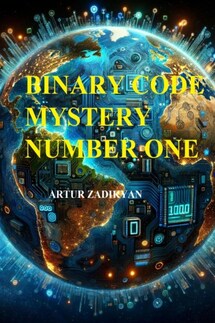Binary code: Mystery number one - страница 50
The hall was silent, digesting what they had heard.
– Any other thoughts? – Ruthra asked in his superior capacity.
The hall was silent, many were writing something down.
The head of the demography department raised her hand. At the same time, the same F department employee offered:
– If there are no objections, I can continue.
Ruthra wanted to already give the word to Madame that she had raised her hand, however, she asked politely:
– Uh, no, no. Can I go after him?
– What else you got? – Ruthra turned to the man who had suggested he continue.
– If that's the case, the logical thing to do is the following," he said. – We need to get people to think about it, to make them realize that it could happen. We need to use everything: lectures, movies, music, talk shows, politicians, scientists, military. You have to give examples and constantly scare them. I will tell you, give examples, what information and how you can use it. Attitudes toward the problem of human extinction depend largely on an individual's belief in life after death, ideas about the value of the human race. Human extinction is part of many people's belief in the sense that the end of the world means the absolute end of their earthly existence but not of their eternal soul. Some religions allow for cyclical regeneration. However, most religions do not associate the end of the world with human extinction, since the end of the world means in reality the beginning of a new way of existence, with the Christian religion saying that after the end of the world, all humans who have ever lived will live forever with their bodies, but elsewhere. However, there are the following reasons why the risk of extinction of humanity is not obvious: throughout history there have been countless predictions of human extinction. In all cases, the predicted end-of-the-world date has passed without any consequences, making subsequent warnings less frightening. There are thousands of public safety jobs dedicated to analyzing and reducing the risks of individual death. Yet there is not a single person dedicated to human extinction risks working full time, in part because there is no way to know if they are doing their job well. Pondering human extinction has become unfashionable. Denialism is a kind of negative availability heuristic that occurs when the outcome of events is so unpleasant that even the very act of thinking about them leads to a growing reluctance to believe that such a thing could happen. This leads to an underestimation of the likelihood of human extinction. In general, humanity's sense of self-preservation and intelligence is seen as a strong defense against extinction. It is believed that people will find creative solutions to overcome potential threats and will use the precautionary principle when undertaking dangerous endeavors.
The member of the "F" department, pondering something was silent, and then continued again:
– The arguments against this are as follows. First, managing potentially disruptive technologies is becoming increasingly difficult. Second, the precautionary principle is often discarded when the rewards seem to outweigh the risks. One example of the precautionary principle being discarded already exists: before the detonation of the first Trinity atomic bomb, one of the scientists involved in the project, Edward Teller, suggested that a nuclear reaction could destroy the entire state of New Mexico and perhaps even the entire world by causing a nitrogen fusion reaction in the atmosphere. Hans Bethe's calculations proved that this was impossible, but anxiety remained until the moment of testing. Various scenarios of human extinction come from science, popular culture, science fiction, and religion. Humans are probably the only species that has a conscious awareness of its future demise, likely to take steps to avoid it









